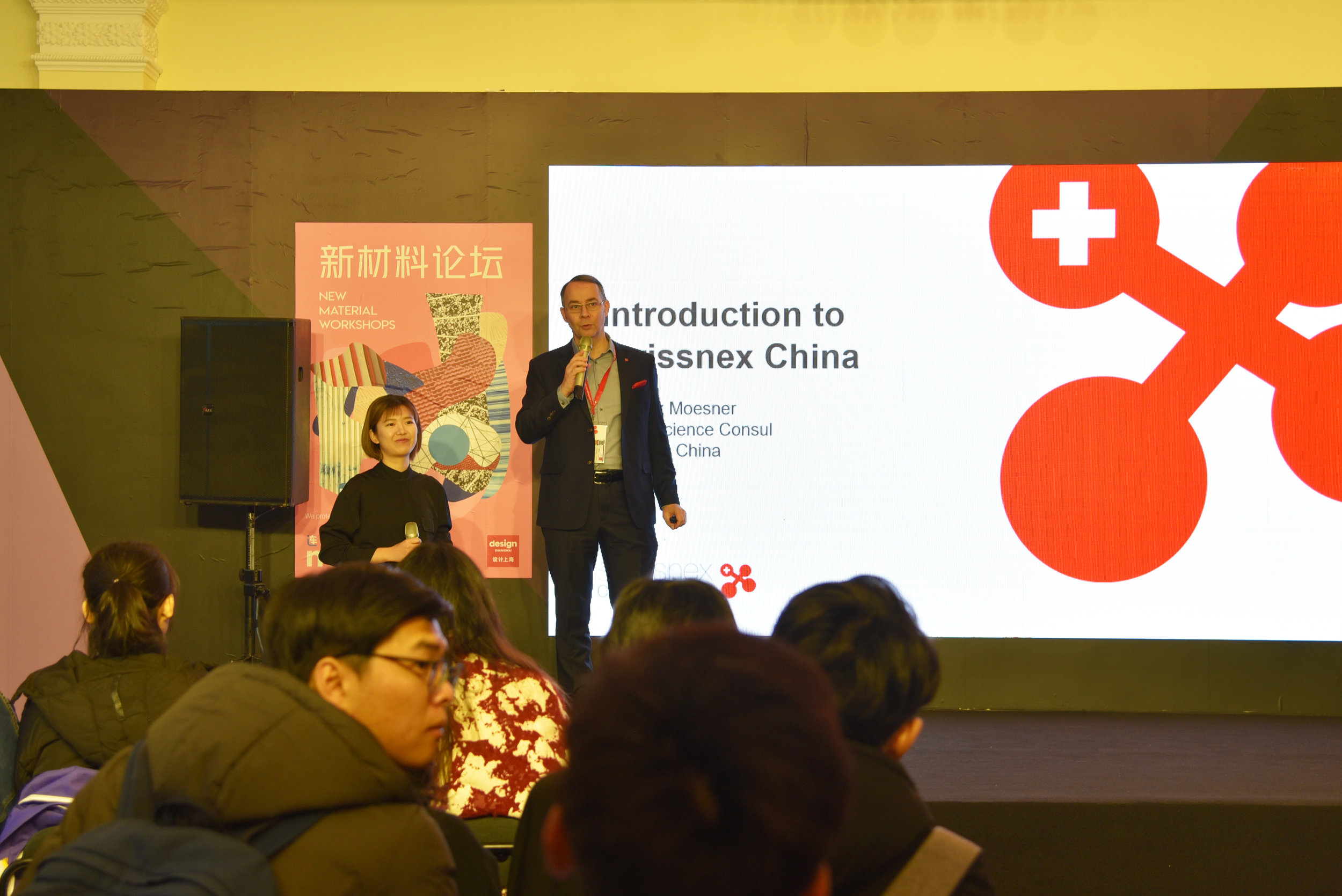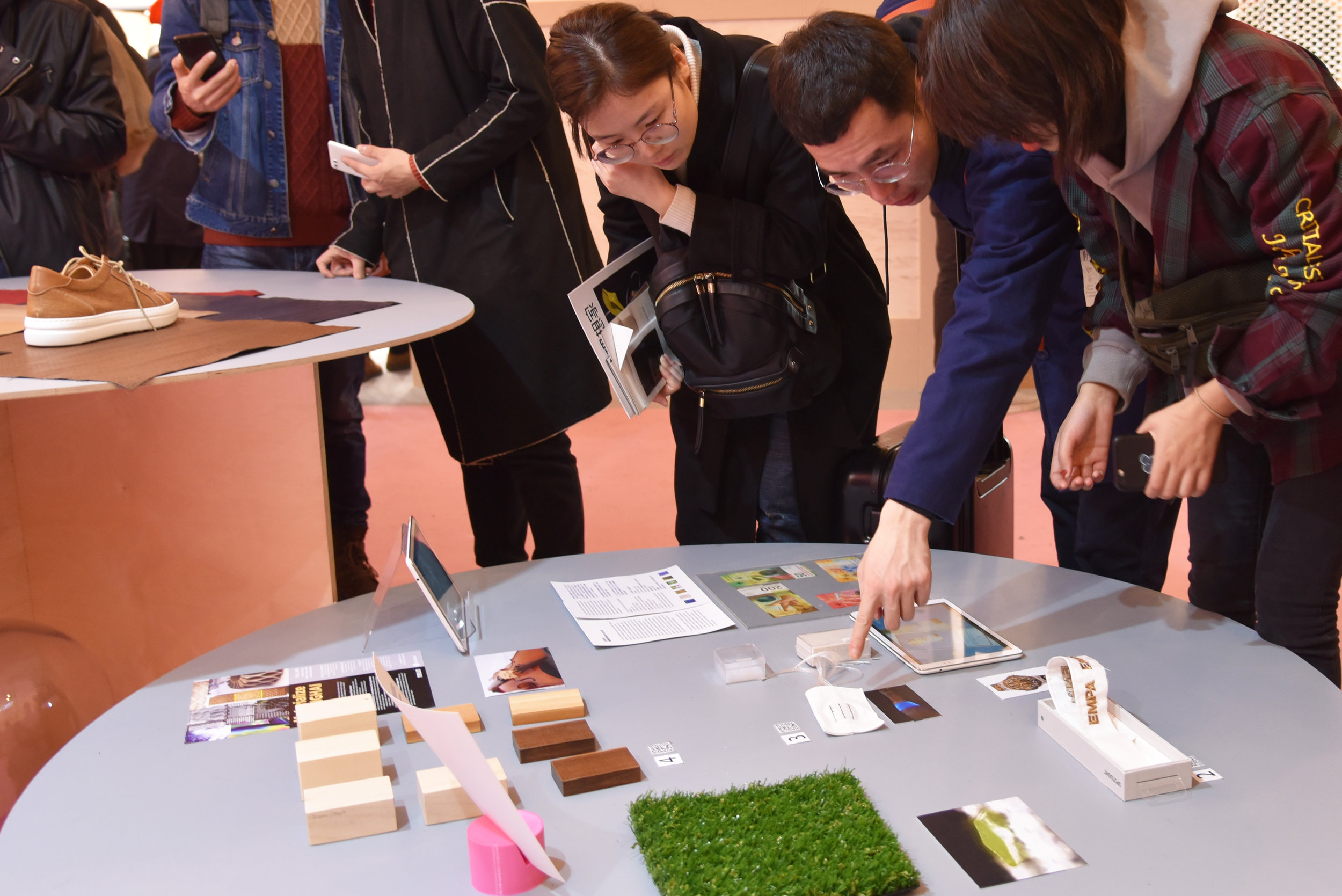By Percy Chen, Junior Project Manager Art-Science
On 19 December, the twelfth Café des Sciences: Internalizing Home Tech took place at the Extra Time Café. Vytautas Jankauskas, the Head of Research and Creation at the Chronus Art Center Lab, gave a comprehensive presentation on the history of his projects and the motivation behind his interest in smart home accessories. Grew up in Lithuania, Vytas (short for Vytautas) witnessed the incredibly fast development of internet reach: Lithuania installed its first satellite equipment on 10 October 1991 and today it has already become one of the world’s leaders in terms of public internet connection — a study by the telecommunications company Ooma found that in 2017, while the U.S. averages 6.89 Mbps public Wi-Fi speed, Lithuania has an astonishing average of 15.4 Mbps. This surplus of internet speed made Vytas wonder what else we could do with it besides the ordinary usage of surfing the web.
Vytautas Jankauskas giving his introduction
Vytautas pointing out his childhood home
In 2015, Vytas’s completed his first project How to Build a Water Filter. The project assumes a reality where one’s financial status determines one’s water allowance. Tap water is accessible via dedicated national identity card extensions that come in Basic, Black and Gold versions. A society where independent water filtering is proclaimed unsafe and therefore illegal, giving birth to water hacking. Convinced that natural resources should remain a universal human right, Vytas has built a DIY water filter and published subversive instructional online tutorials, as well as useful tips for avoiding surveillance.
The filter is built from everyday gardening materials, refurbished personal belongings, and several second-hand flea market acquisitions. The filtering mechanism consists of four steps: a slow sand filter, a silk filter, a short-range UV lamp for water sterilization, and raw salts to re-mineralize the treated water.
Although not entirely about smart home devices, in hindsight, it is clear that this passion project showed Vytas’s interests in DIY and hacking as well as in the notions of institutional control and flawed reality.
It is widely known now that everything we do on the internet leaves a footprint. Many people think this is just happening while in fact it has been happening for many decades. For instance, one of the biggest telecommunications company AT&T stores phone records of movements, calls, and texts going all the way back to 1987. What is different today is that our records are parsed and quantified through some black box algorithm to generate personality profiles. Indeed, in a later project Cached, Vytas started to play with this idea and the implications of home tech.
How to Build a Water Filter, 2015
Upon entering a dark, intimate room, the spectator is left alone with a glowing tablet, prompting to log in. Once they have connected, a mirror which at first glance appears to be part of the room’s interior, lights up and greets the spectator by their name. The following experience takes the form of a personalized audiovisual storytelling, to illustrate just how your activities online contribute to the way in which machines see you.
Based on a textual analysis of your social media posts, Cached reveals your character traits, interests and consumer preferences. At the end of the experience, all personal data is erased, and the visitor receives a unique printed receipt containing a summary of the analysis.
Cached, 2018
Vytas’s presented a few more sophisticated projects including Somestic Media and works from another duo Arvid & Marie. All the projects are exemplary in the sense that it lets the audiences question their connections to the machines they surround themselves by. Are we the master of these smart home devices? Or are we serving the machines by feeding them data to enhance their profiling on us as well as their artificial intelligence? Additionally, when we take a step back and examine recent technologies, we cannot resist but wonder if they are developed for humans or simply for profit. The audiences at the event raised many similar questions on the relationships between humans and technologies. Some brought up the interesting topic of animal technology — specifically VR gaggles for cows for milk production.
At the end, we would like to thank Vytautas Jankauskas for his fantastic presentation and all those who were involved in the discussion. We aim to create and share values among our community members and this Café des Sciences was more than informative. Thank you! Stay tuned for our next event.
To view more photos from the event, click here.





























